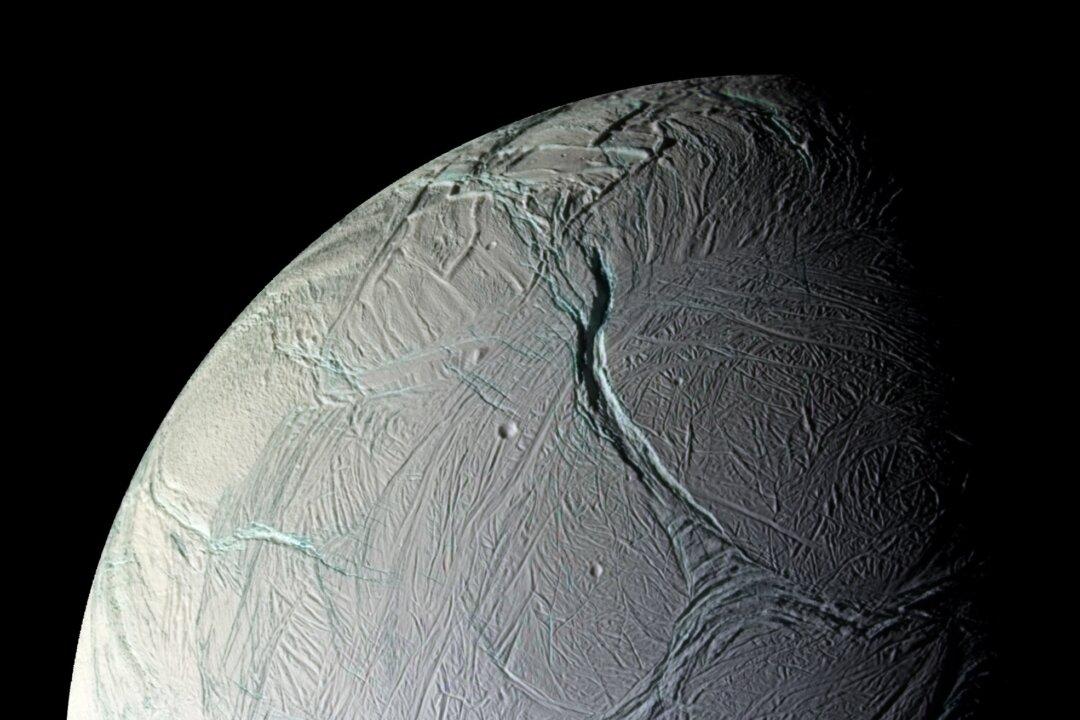By examining tiny wobbles of Saturn’s moon Enceladus—whose cosmic quavers are detectable only in high-resolution images taken by NASA’s Cassini spacecraft—planetary scientists have discovered that a global ocean lies beneath the moon’s thick icy crust.
For a new study, researchers analyzed more than seven years worth of Enceladus images taken by the spacecraft, which has been orbiting Saturn since mid-2004.

Illustration of the interior of Saturn's moon Enceladus showing a global liquid water ocean between its rocky core and icy crust. Thickness of layers shown here is not to scale. NASA/JPL-Caltech




